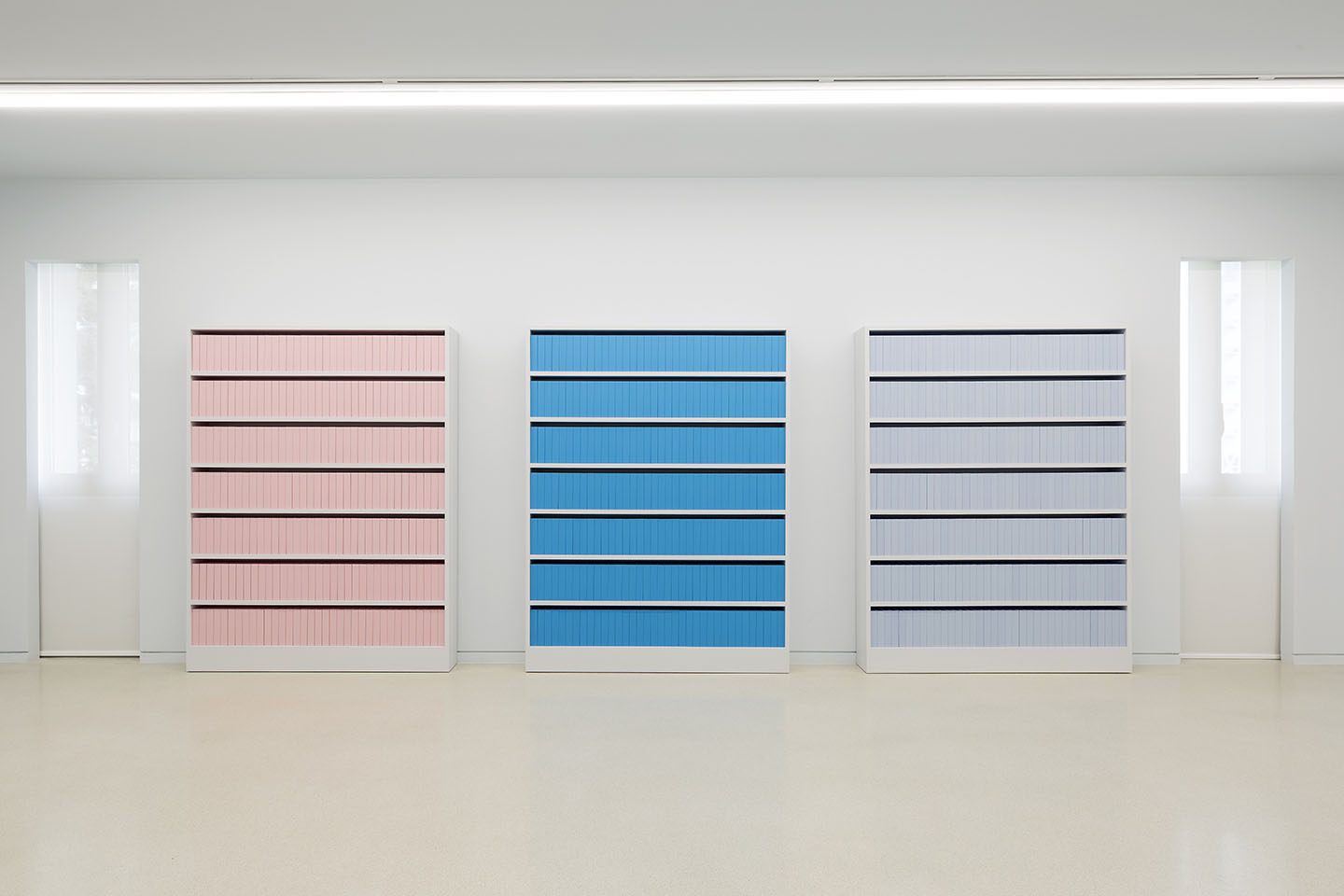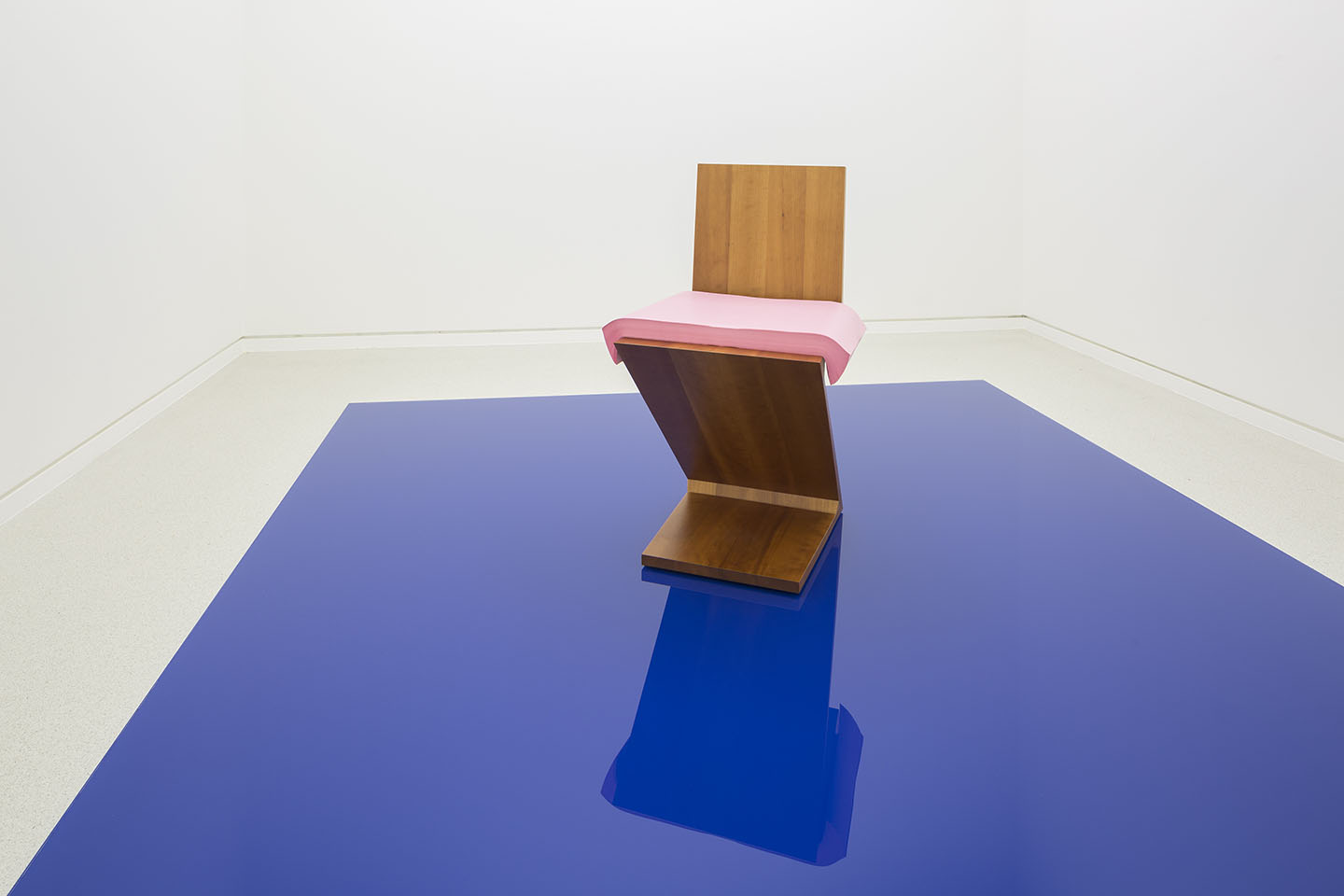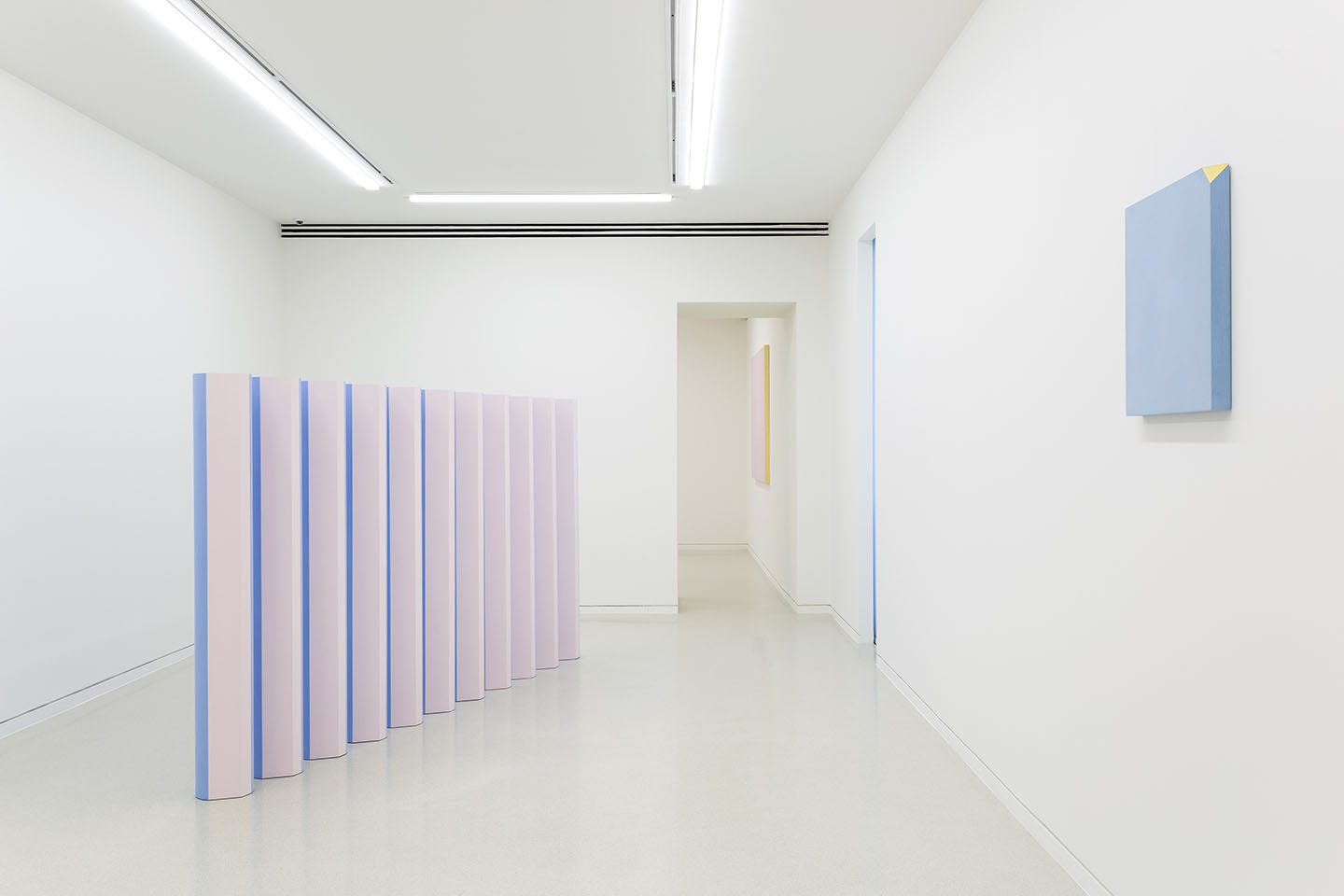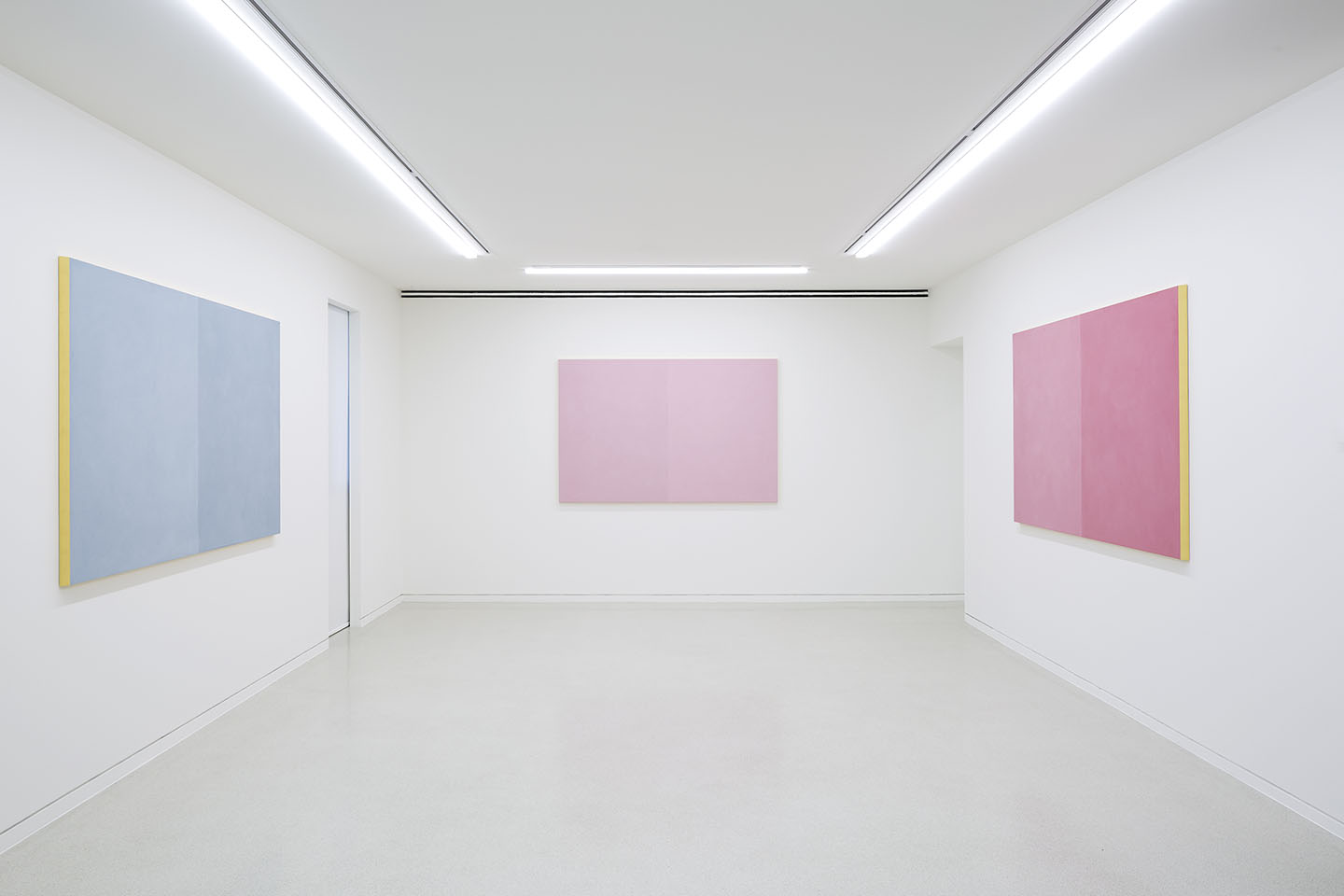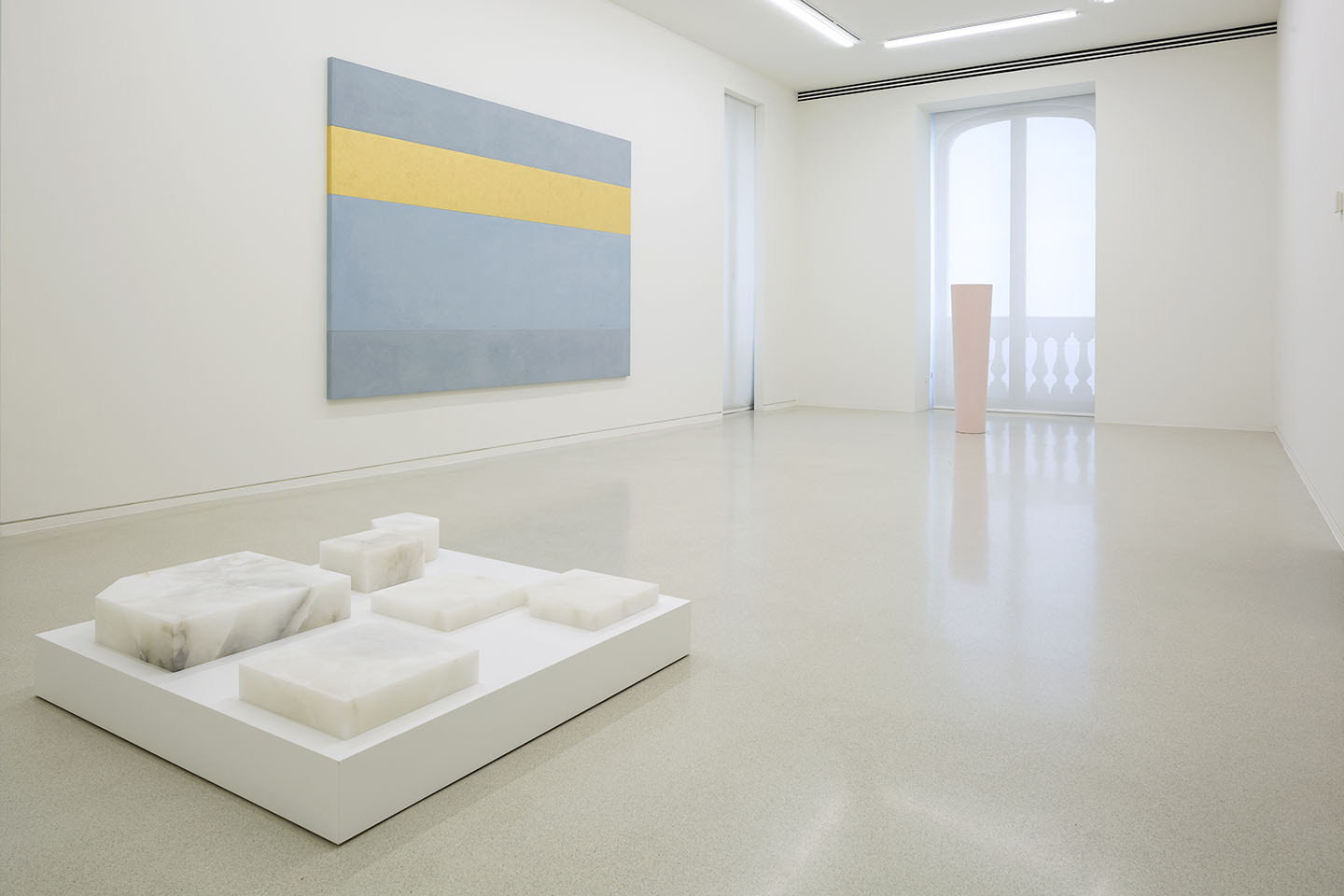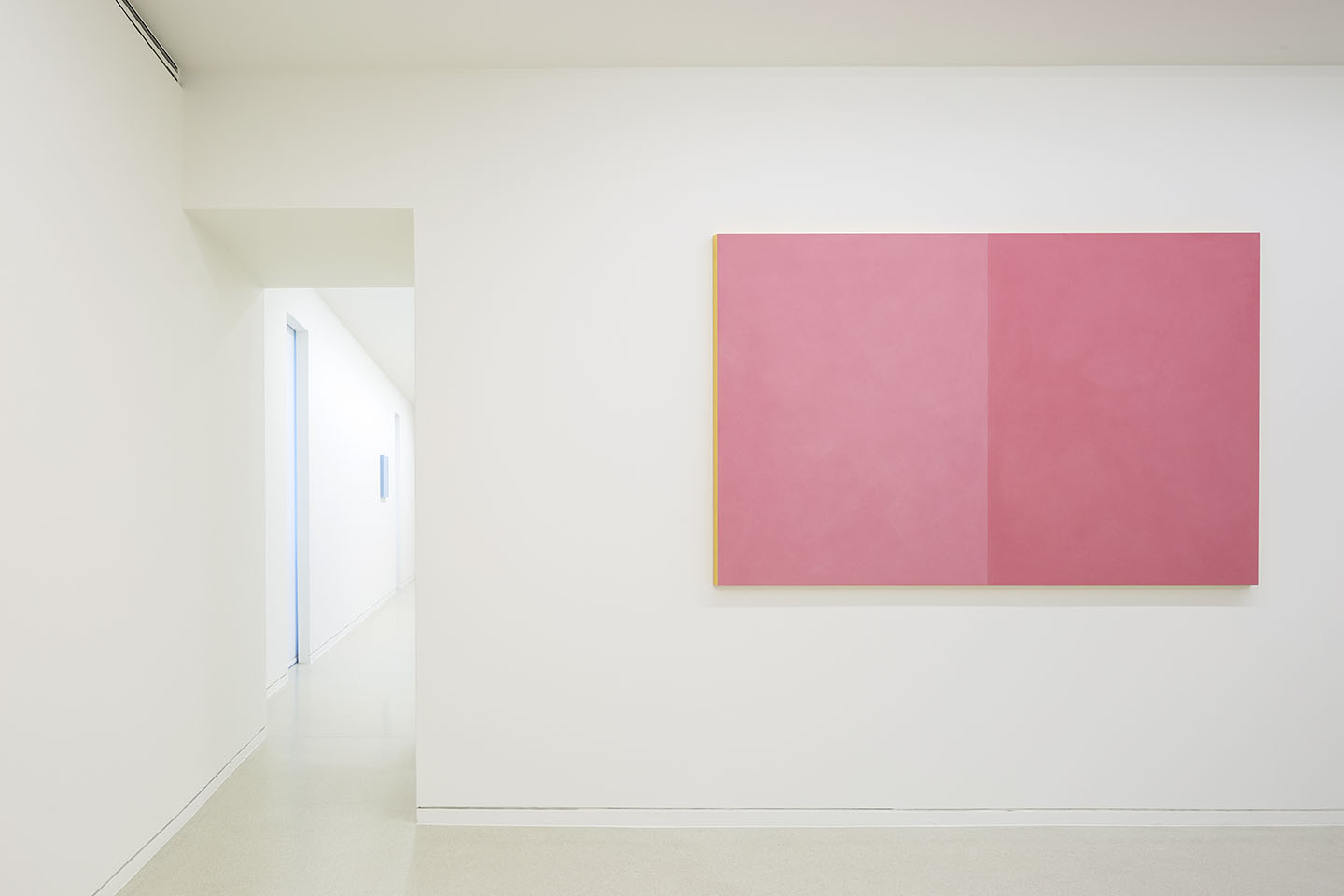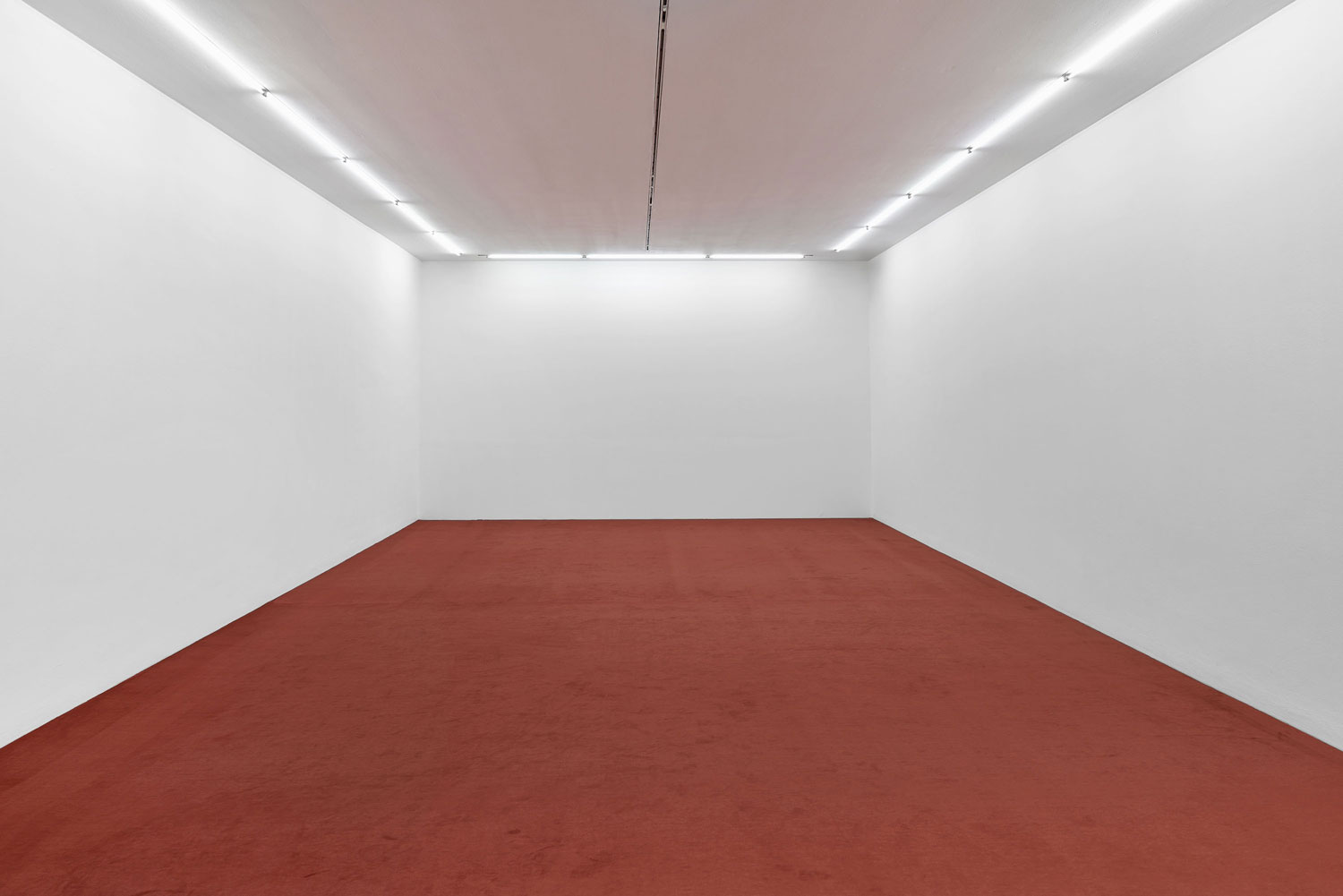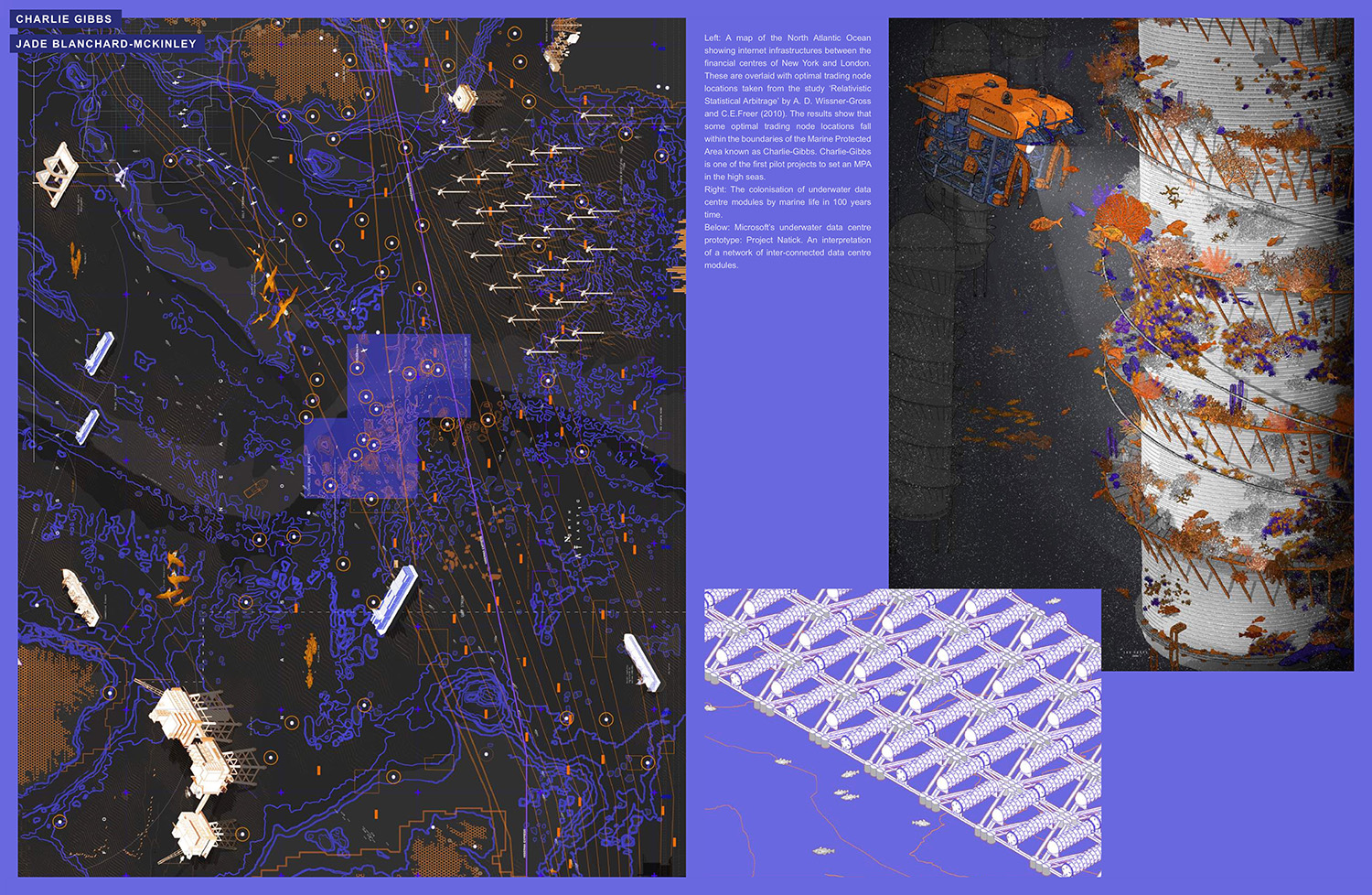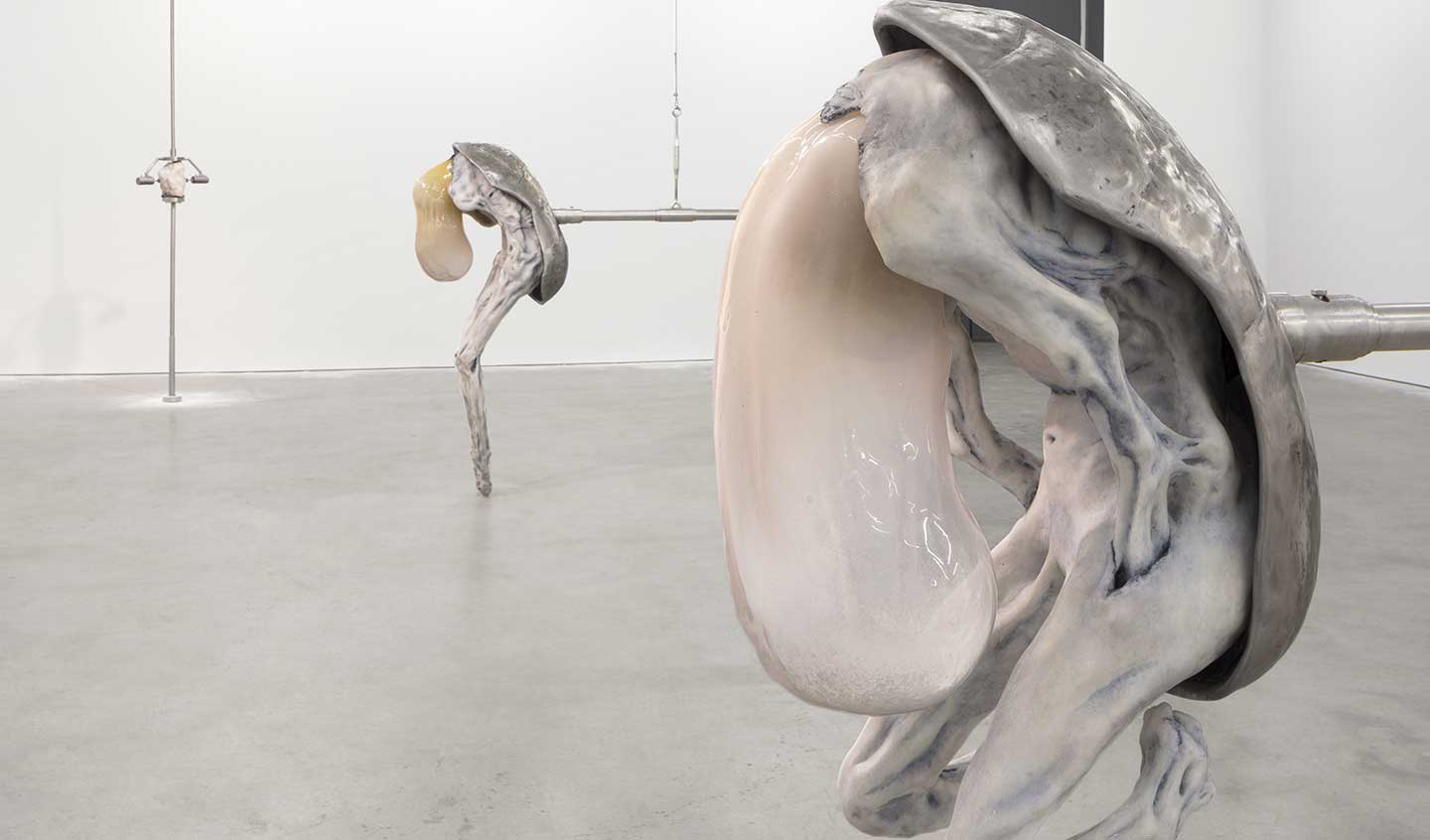Experiencing Ettore Spalletti’s solo exhibition at the NMNM’s Villa Paloma — spread over three floors and seven galleries — is akin to walking through a James Turrell light installation. The immaculately white rooms dissolve the edges and absorb the shadows of the artworks on view, which appear to hover in space and meld into their surroundings. Their appearance may well change depending on exterior weather conditions, given they bathe in muted natural light that seeps through the blinds. The overall impression is that of a perpetual blue hour.
Most of the thirty-odd works brought together and made specifically for the show come in a restricted palette of powdery blue, pink, soft gray, and white — all colors of dawn and dusk. The artist paints on wood, board, or resin using an impasto technique, painstakingly applied in multiple layers and scraped away so as to achieve the richly textured grainy finish that is his trademark. Monochromatic works and diptychs presenting a subtle gradation of the same hue are often hemmed in by gold leaf, acting as a halo of sorts. Painted onto the edge or a slanted corner of a painting, or more rarely on the surface as in Grigio verso l’azzurro, paesaggio (2018), these details bring a playful, rogue element to an otherwise austere composition while drawing attention to the painted panels as three-dimensional objects.
Take the three pieces that make up the Librería, rosa, Librería, azzurro, and Librería, grigio (2018) triptych, identical in every respect except for the titular color of the bound paper books lining the shelves, all carved from a single piece of wood, painted white with lacquer. From a distance, the void between the books and shelving becomes an additional horizontal black strip, creating a rhythm of alternating white, black, and colored bands that straddle both the two- and three-dimensional. Another recent piece, Vado di sole (2018), consisting of eleven polyhedral wooden blocks painted blue and pink on alternating sides, revels in a play of overlapping colors as one walks around the row of columns diagonally aligned across the gallery space.
In his practice, Spalletti references a wide range of artistic movements. Caro Rietveld (2007), whose very title reads like a love letter, appropriates one of the Dutch designer’s iconic wooden Zig-Zag chairs, placed atop a sheet of reflective blue glass with a ream of pink tissue paper laid over its seat. The glossy black Disco (1981) — the earliest work in a show spanning several decades of the artist’s career — is a nod to the wide-brimmed hat sported by the Warrior of Capestrano, a limestone statue dating from circa 700 BC found in the artist’s native Abruzzo region — an ongoing source of inspiration for him.

